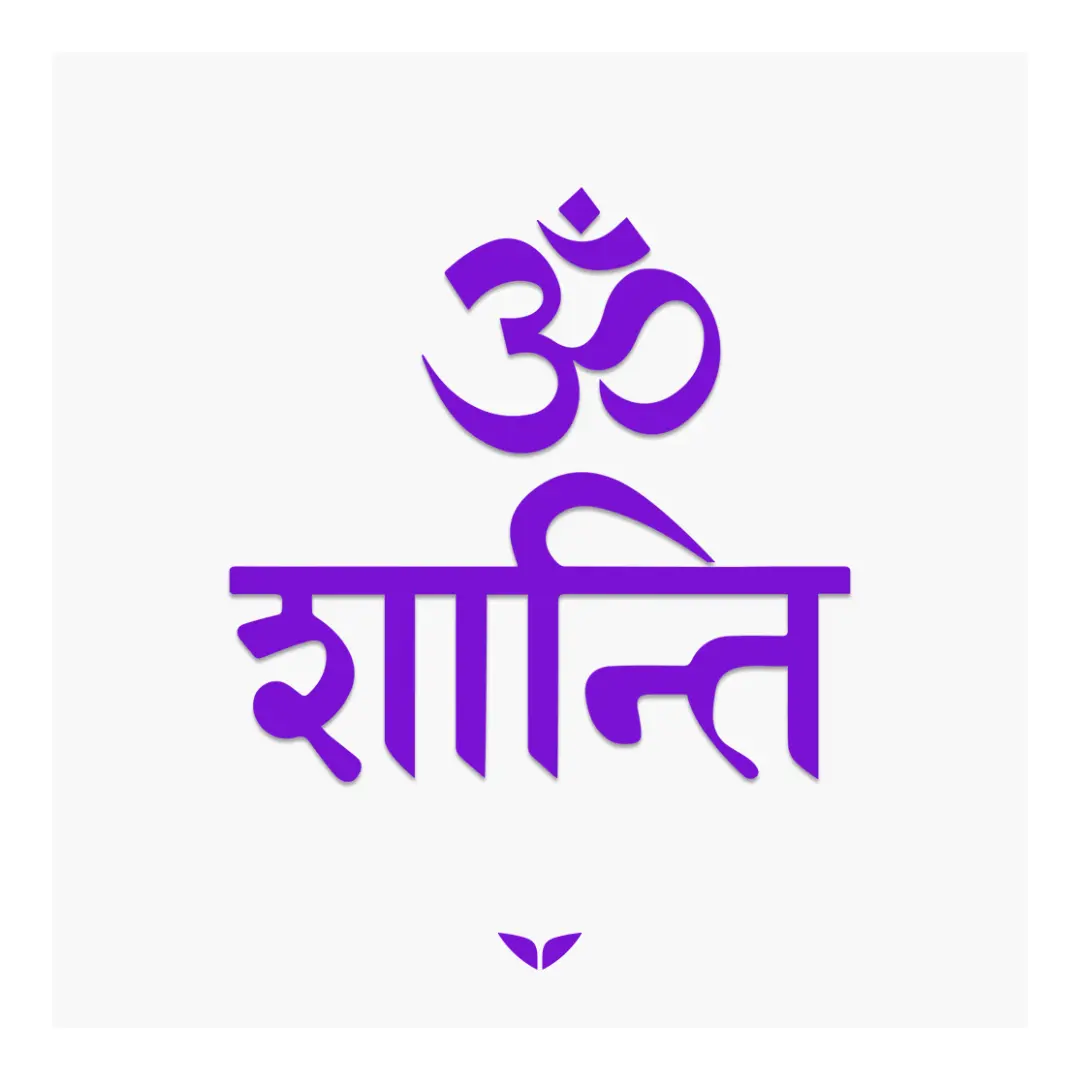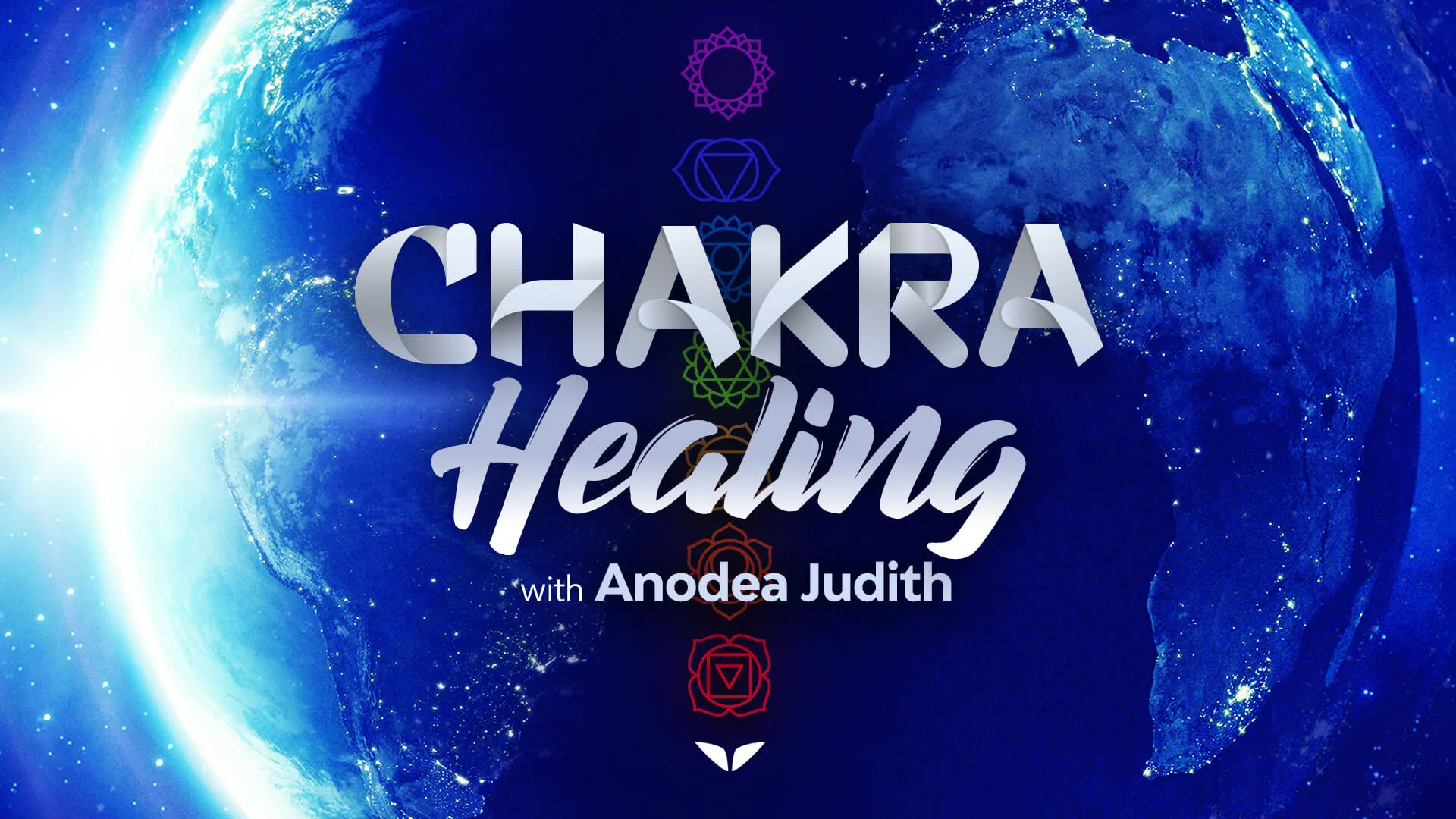Have you ever been greeted with “Om Shanti”? If you have, how did it feel?
Rooted in Buddhism and associated with yoga and meditation, Om Shanti is much more than a yogi-type greeting. It has a profound meaning that can help elevate your consciousness and improve many aspects of your life.
This sacred mantra can help you tap into the infinite wisdom of the universe and deepen your understanding of yourself from a vibrational standpoint.
What does Om Shanti mean?
“Om Shanti” is a versatile meditation mantra, also used as a sacred greeting phrase in various forms of yoga. You may also encounter it in a Buddhist chant or two.
In the most common understanding, the phrases “Om Shanti” and “Om Shanti Om” are often used to say, “Peace be with you.” But their original meanings represent something more significant than that.
Anodea Judith, the world’s leading chakra expert and trainer of Mindvalley’s Chakra Healing Quest, explains in her book Chakra Mantras: Liberate Your Spiritual Genius Through Chanting: “Om” and “Shanti” together create a powerful vibration that can help calm the mind, reduce stress, and cultivate a sense of inner peace.
The meaning of “Om” in Sanskrit
There’s no word-for-word translation available because “Om” has no direct translation. The sacred vibration of this syllable comprises the entire world—the past, the present, the future, and beyond. “Om” transcends threefold time and space.
Also, the sound it makes vibrates at a frequency of 136.1 Hz, also known as the “Om Frequency.” It resonates with the Earth, so it comes as no surprise that it is said to be the primordial sound of the Universe, representing the cycle of death and rebirth. Thus, it connects us to all that is, was, and will be.
Nirak Naik, SOMA Breath® creator and trainer of Mindvalley’s Breathwork for Life Quest, explains that chanting the sacred mantra “Om” can help you with three things:
- Activate the parasympathetic nervous system,
- Promote the body’s rest, and
- Deep relaxation.
As a result, you will experience a sense of calm and peace, oxygenate your body, and reduce stress and anxiety.
What’s more, according to a 1998 study, mentally repeating this mantra can increase your focus and overall alertness.
The meaning of “Shanti” in Sanskrit
What about “Shanti”? In Sanskrit, it stands for “peace” and “tranquility.” So the “Om Shanti” meaning is “universal peace.”
Om Shanti, Shanti, Shanti: A wish for threefold peace
“Om Shanti, Shanti, Shanti” is an expression of a wish for universal peace. When you repeat “Shanti” three times, you express a wish for peace in three aspects of life:
- Physical peace in the body, free from illness, pain, and discomfort;
- Mental peace in the mind, free from stress, anxiety, and negative thoughts; and
- Spiritual peace in the soul, free from ignorance and attachment, and connected to the divine.
Therefore, “Om Shanti, Shanti, Shanti” is a wish for threefold physical, mental, and spiritual well-being.
How to pronounce “Om”
The “Om” is pronounced as “AUM” as a single syllable with a long “O” sound, followed by a humming “M” sound.
To pronounce it correctly:
- First, open your mouth wide and take a deep breath.
- As you exhale, start making the “O” sound while keeping your lips rounded and your tongue relaxed.
- Gradually close your mouth while still making the sound, which will resonate in your throat.
- Finally, as you reach the end of the sound, close your mouth fully and make the humming “M” sound with your lips closed.
You can follow guided meditations to get it right. Breathing and making the vibration are key.
Om Shanti symbol
Om Shanti is represented as ॐ शान्ति—the phrase is written in the Devanagari script.
Technically, it doesn’t have a symbolic representation apart from this phrase, represented in its original form. So ॐ शान्ति is used as a sacred symbol in itself, and the pronounced version of it is a mantra you can say to greet someone, kiss farewell, or affirm a state of peace and tranquility.

Om Shanti meaning in yoga
When you greet a fellow yoga practitioner with this mantra, you wish them to experience divine peace.
Think of it as a variation on “Peace be with you,” “Shalom,” or “Namaste.” The words may sound different, but they essentially mean the same thing: “I acknowledge you, and I wish you well.”
How to use Om Shanti in your life
The “Om Shanti” mantra is very versatile, as you can use it in a plethora of ways to bring more inner peace and tranquility into your life:
1. Mantra meditation
Incorporate the “Om Shanti” mantra into your daily meditation or chanting practice by simply repeating it while focusing on your breath. Meditating on this mantra will calm the mind and help you cultivate inner peace.
Learn more: Empower yourself with this go-to guide to mantra meditation for beginners
2. Affirmation
Use “Om Shanti” as an affirmation or intention for your day by taking a moment to say to yourself, “I am peace. Om Shanti.” When you do this first thing in the morning, you prime your mind to approach any situation with a peaceful mindset.
Learn more: 20 positive affirmations you can use to inspire your life
3. Send healing
It is a powerful way of sending someone healing energy. By repeating the mantra “Om Shanti” and visualizing the person surrounded by a peaceful and healing light, you amplify well-being and peace in their life.
4. Gratitude
When you reflect on the things that bring you peace and joy, you can deepen your gratitude by saying to yourself, “I am grateful for the peace in my life. Om Shanti.”
Incorporating the phrase “Om Shanti” into your daily life can serve as a great reminder to stay centered in your peace at any given moment.
Learn more: Revolutionize your mindset: How to create a gratitude journal practice
5. Chakra healing
According to Anodea, chanting the “Om Shanti” mantra can heal your throat and heart chakras. By chanting this mantra, you can activate and balance these chakras to improve your communication and self-expression and cultivate more compassion and peace.
Learn more: 9 chakra healing power moves to K.O. negative energy and ignite your inner sunshine
Elevating your connection with yourself and the Universe
“Om” and “Shanti” are two of the numerous sacred syllables known to humanity for centuries. The ancient yogis discovered that each chakra corresponded to a particular syllable, which they used to create chakra mantras. This is how they applied their profound understanding of energy as a vibrational frequency that permeates all there is.
When you understand how you function as an energetic being, composed of energy centers, you can become whole by connecting your body, mind, and spirit in a cosmic, orderly way. And this is what Chakra Healing Quest with Anodea Judith can offer—a holistic approach to elevating your connection with yourself and the Universe.
The best part is that you can sample classes from this quest by unlocking your free access. Welcome in.









